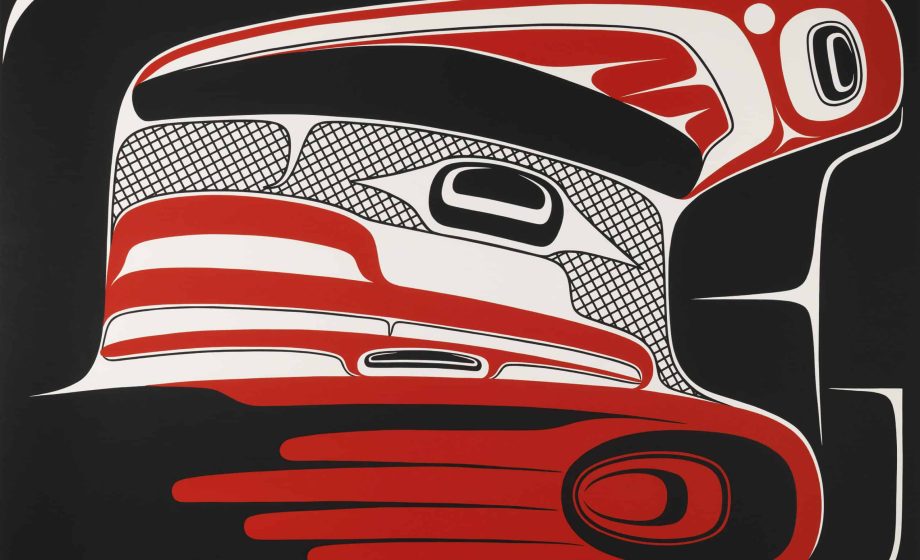The aesthetic sensibilities of the Haida are some of the most iconic and easily recognizable, a wealth of modern artists bringing the bold styles of their people to modern audiences. From their legendary totem poles to their striking palettes of red, black, and white to powerful linework filled with character to the depiction of the supernatural and natural worlds intertwined, its form captivates effortlessly. The Vancouver Art Gallery has put forth one of the most respected artists in this vein with their exhibition Guud san glans Robert Davidson: A Line That Bends But Does Not Break.
Guud san glans Robert Davidson has been an active artist within British Colombia and across Canada since the 60s. Early in his career, he mentored under the equally renowned Bill Reid, a Haida artist specializing in carving whose design was posthumously honoured on Canada’s two-dollar coin in 2020. That decade saw Davidson carving and raising the first totem pole in nearly a century on Haida Gwaii, an archipelago and Haida Heritage Site off of BC’s coast. His commitment to preserving and spreading his culture is clear, his style being dubbed contemporary-traditional through its cross-pollination of cultural lineage and modern directive.
The works on display at The VAG are strong indicators of the modern Haida style at large but especially the impactful sharpness of Davidson’s unique identity within this paradigm. In such works as 1983’s Raven Finned Killer Whale, we see a cultural fingerprint prevalent across Haida artists (the killer whale denoting, amongst other things, family, community, and protection), but a distinct vision of this touchstone through Davidson’s larger-than-life dimension to the creature. It mesmerizes and almost dwarfs the viewer, even with the print being only of modest size.
Across each decade we see a spirit of innovation throughout the works presented in the exhibition. One of the most obvious places Davidson’s modern sensibilities are spotted is in the keenly verbose titles of pieces throughout the 90s and 00s. The World is as Sharp as the Edge of a Knife (1993) is as its title suggests, which stems from a Haida proverb that continues: “As you go along you have to be careful or you will fall off one side or the other.” There is a cutting edge to the geometric symmetry displayed in this work, but also a spacious, Earthly quality to its deep blue. It is at once expansive and a razor. Equally striking are the works across Davidson’s focus on red—varying shades of deep crimson that seer with a visceral poignancy that the VAG has brilliantly positioned along contrasting walls that make works like Occupied hard to look away from.

In his most recent years, Davidson’s work feels like he takes the traditional figures that have travelled—across his career and from his roots—alongside him and extracts them into looser, more ambiguous parameters. The results, especially in tracking one’s way through the exhibition, make for a sort of re-introduction; seeing an old acquaintance after a significant portion of time has changed the way you look at them. And by no means do these works feel anything less like Davidson. They are simply evidence of how this artist has always endeavoured to progress his process.
Guud san glans Robert Davidson: A Line That Bends But Does Not Break is an experience both intellectual and spiritual. Davidson treads a unique course through the context of his own heritage and through the sensibilities of the modern art world to give something that does justice to both. With such evocative expressions of abstract shape and resolute colour, the depictions of a realm somewhere beyond our own are “a masterclass in the Haida language of forms” and not a collection to be missed.





